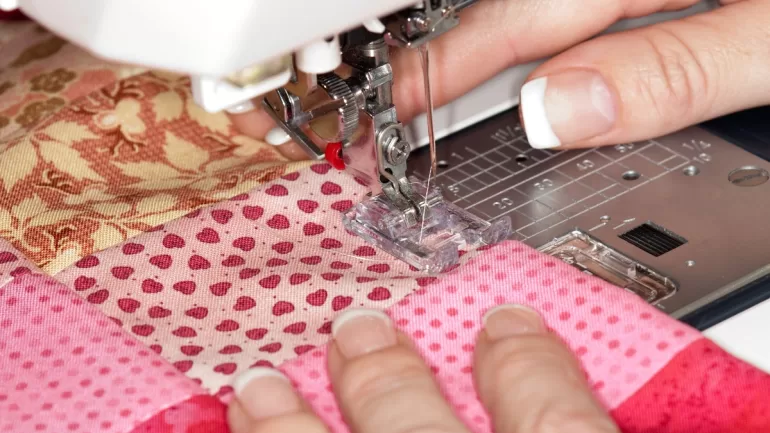LIFESTYLE
Quilting is more than just joining fabric pieces together. It’s about creating a tactile masterpiece that invites touch and admiration. Adding texture to your quilts transforms flat surfaces into dynamic works of art that capture light, shadow, and visual interest. These five techniques offer remarkable depth and dimension for any quilter, from beginner to experienced, looking to expand their skills or seeking fresh inspiration.
Use Strategic Batting Choices
Batting selection is the foundation of textural quilting. Different batting materials create distinct surface effects that can dramatically change your quilt’s appearance. Cotton batting provides a flat, traditional look, while wool batting creates gentle loft and natural draping. Polyester batting offers more pronounced puffiness between quilting lines, making your stitched patterns pop with dimension. Consider using multiple batting layers in specific sections to create raised areas or try needle-punched batting for a firmer texture that holds quilting patterns beautifully.
Incorporate Surface Embellishments
Transform your quilt top by adding three-dimensional elements that catch the eye and invite exploration. You can strategically place beads, buttons, ribbons, and fabric flowers to enhance your design theme. French knots, bullion stitches, and couched threads create raised linear elements that add both texture and color variation. When working with embellishments, secure them firmly to ensure durability, and consider their placement carefully to maintain the quilt’s functionality.
Master Decorative Stitching Techniques
Your quilting stitches become powerful texture tools when you vary their density, direction, and style. Dense stippling creates a heavily textured background that makes other areas appear to float forward. Echo quilting produces gentle waves of texture that follow your design motifs. Experiment with different thread weights and colors to enhance the textural effect. Metallic threads catch light differently than cotton, while variegated threads create color movement that enhances surface interest.
Explore Applique Possibilities
Layered applique work adds immediate dimension to your quilts. You can enhance easy appliques by leaving edges unfinished for a frayed texture, or by layering multiple fabric pieces to create shadow effects. Consider using fabrics with different textures, such as corduroy, velvet, or linen, to create tactile contrast against cotton backgrounds. Dimensional applique techniques like prairie points, yo-yos, or folded fabric elements add sculptural quality to your designs.
Experiment With Fabric Manipulation
Pre-quilting fabric manipulation opens endless possibilities for texture creation. Pleating, gathering, or creating fabric tubes before incorporating them into your quilt top adds permanent dimensional elements. Trapunto techniques, where you stuff specific areas for extra loft, create beautiful, raised motifs. Slashing techniques, where you cut and fray multiple fabric layers, produce rich textural surfaces with minimal effort.
These techniques offer exciting pathways for adding texture to your quilts while expressing your creative vision. Start with one method that appeals to you, then gradually combine techniques as your confidence grows. Your quilts will develop personality and presence that sets them apart from ordinary bed coverings. Experiment with different fabrics and stitch patterns to create unique effects. The process of creating is just as rewarding as the finished quilt itself.
